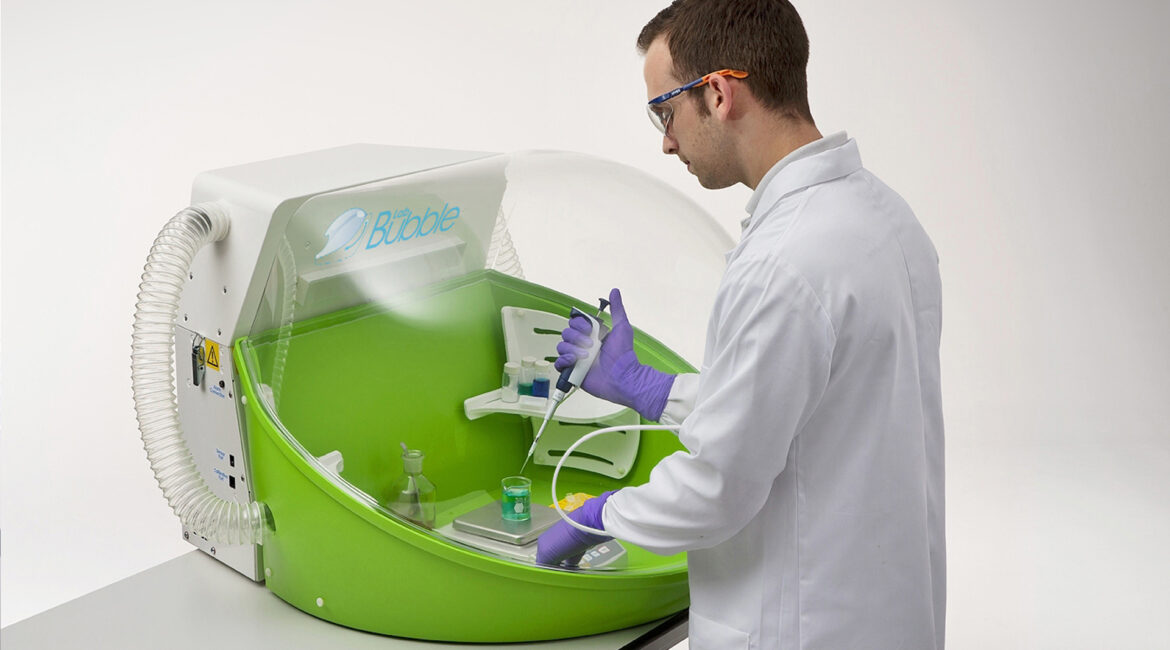How does it work?
The fume hood is a ventilated enclosure that contains harmful fumes and gases. It has an exhaust situated above that can pull and remove the contaminations in the air using situated ducts to release the air. The design prevents these contaminations from harming the operators as well as others present in the surroundings. The toxic air inside the hood filters the building’s exhaust systems and then releases into the atmosphere. Ducted hoods directly release the air while ductless hoods redirect the clean air back into the laboratory.
Operation of a Fume Hood
The operation of a fume hood begins by pulling the air and fumes that enter through a sash. Depending on the configuration, the sash can move vertically, horizontally, or the combination of both. The sash itself provides limited protection by acting as a barrier between the operator and the hood chamber. As the airflow gradually makes its way towards the idle of the hood, it pushes the harmful gases or vapors present towards the exhaust. The exhaust area has slots that act as exit doors of the hood that connects with ductwork (ducted) or filters (ductless).
In any case, where these holes are blocked, that path to exhausting air is also blocked. In many designs, these fume hood exhaust holes are easily adjustable, and the airfoil present around the fume hood face allows even airflow to avoid any turbulence. After the air exits the hood, it goes through filters that release it in the atmosphere through ductwork or in a ductless setting; clean air goes back into the laboratory environment.
Types of Fume Hoods
- Airflow Hoods
For any laboratory, application that requires adjustment of airflow within the hood, customized fume hoods that can direct airflow through variations and required velocities. Airflow is a necessary part of fume hoods, and as such, this type comes in handy where the application requires.
- Thin-Walled Fume Hoods
Heavy-walled fume hoods are a common sight in laboratory settings where handling of hazardous material is common. Thin-walled hoods that work on the same principle applies where less volatile content treatment is a routine. Thin-walled hoods are generally more economical as compared to heavy hoods.
- Cabinet Chambers
For large-scale projects where the use of bench hoods cannot suffice, cabinet fume hood chambers are used. These large-sized hoods allow an operator to either sit inside or stand to house larger equipment or material and gives enough room for operating.
Installation
To enhance the safety feature of fume hoods, always have a professional install the hood. Professionals will be able to place and position the hood accurately and guide it to provide maximum safety. Another reason is the complexity of a fume hood that needs a professional to install it accordingly. Provided the need, some fume hoods need unique settings to direct the air out of the building. In some configurations, these hoods have with them incinerators that burn toxic gases. This sophisticated setting needs a professional to install and position the device.
Final Point
Choosing a fume hood means you value handlers’ safety and personnel present in a laboratory, and so need careful consideration. Manufacturers with reputation will ensure that the grounds for efficiency, safety, cost, and customization as per the need of the user.

